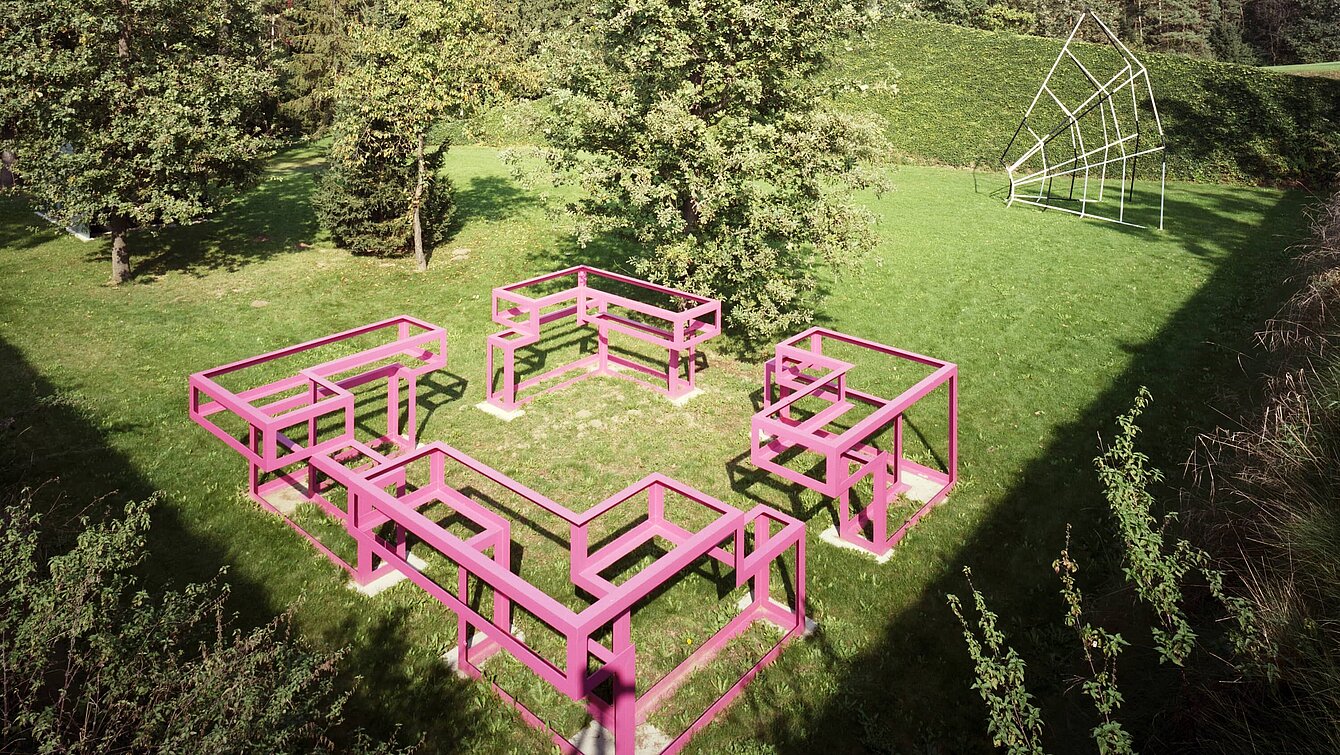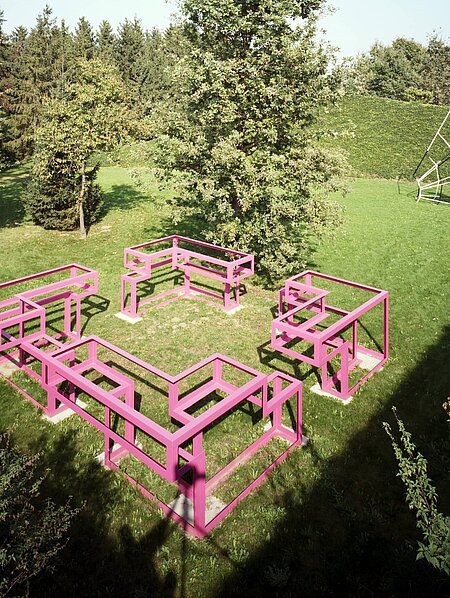Pichler’s work liberates the characteristics of architecture and sculpture from their rigid definitions. Its individual elements are based on L-profiles, which at first glance could seem identical in their composition. In an artistic process of rearrangement, however, the modules have been repeatedly reassembled, calling on us to explore the irregular in the regular. The possibility to walk into the sculpture is opened up by the gaps, which we perceive as ‘entrances’. At the same time, the skeleton construction results in a kind of transparency, meaning that we can experience an exterior and interior space simultaneously.
Untitled
Franz Pichler, 1991/92


Image Credits
Author
Werner Fenz
Location on map
Position 21
Owner
Artothek des Bundes
Artist biography
Franz Pichler
Show all
About the sculpture
Even from a distance, this striking ensemble establishes a distinct interface between sculpture and architecture; a transition stage in which – on average – free and functional formal qualities differ from each other over and over again.
Starting with its anti-naturalist colouring, the work seems to open up a view of purely constructional elements taken from a technological context. Taking the work to be a model of a frame construction, the viewer’s experience would consist in discovering the irregular in the regular.
The ensemble consists of simple elements on the basis of L-profiles that only appear to be identical in their composition, even though their basic structure is the same. This is the artistic process of rearrangement: as with modular structures, the cubes, mostly visible in their outlines, are combined in different ways, over and over again.
In this system, four units arranged at an angle form a rectangle that turns out to have spatial qualities: although enclosed at all sides, it is still possible to look into and through it from all directions.
This means that the characteristics of both genres – architecture versus sculpture – shake off their rigid definitions. The transparency created through the specific use of means of design in this work enables us to experience both an interior and exterior space, and the positioning of the four elements begins to look increasingly ambiguous, not only on a theoretical level: if the constructional sculpture units were to be shifted in such a way that the four empty spaces that we perceive as “entrances” would disappear, the result would be a precisely fitting, compressed ensemble, and our perceptive parameters would once again be jolted.


















